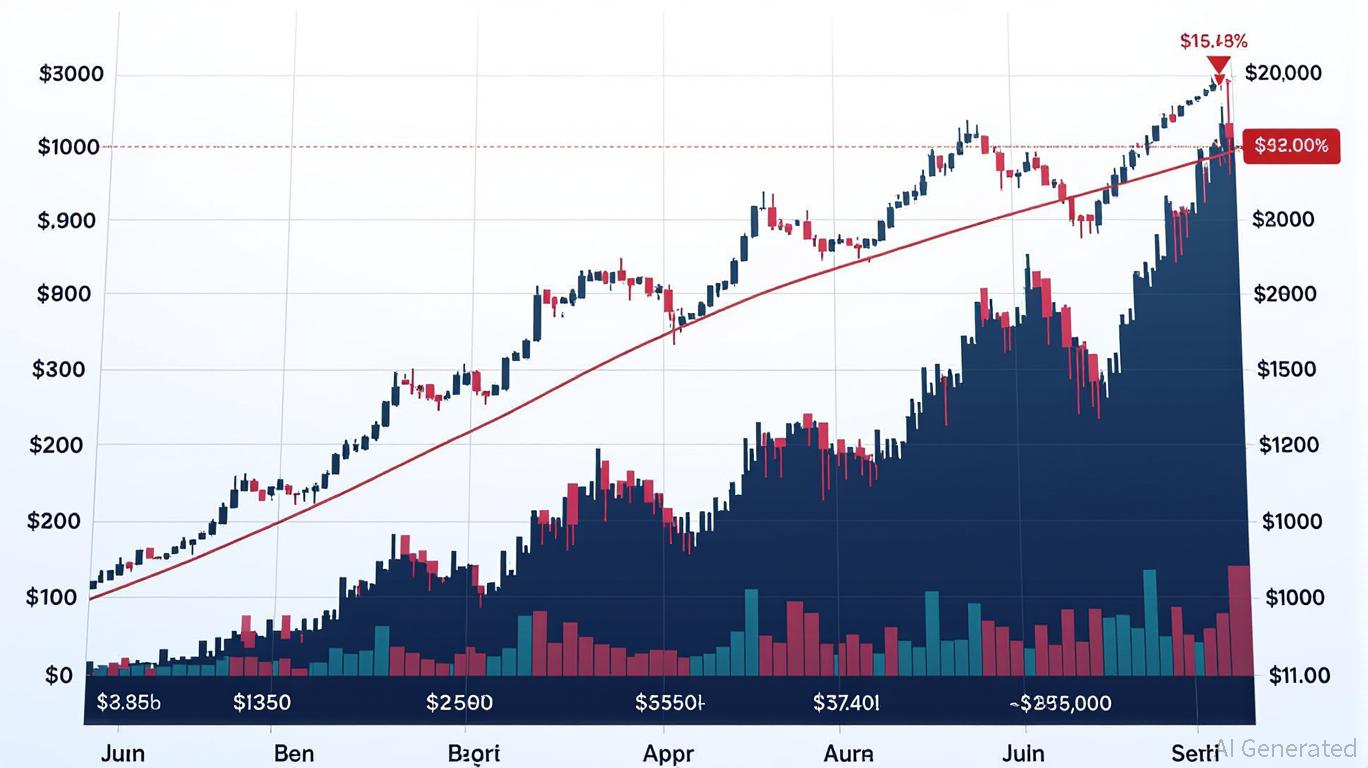The Growing Convergence of Legal Studies and Social Impact Investment
- Berkeley Law's PISP offers full-tuition scholarships to JD students pursuing public interest careers, reducing debt barriers for social justice work. - Graduates earn median $72,000 salaries but maintain debt-free careers in criminal justice reform, reproductive rights, and corporate accountability. - The program creates long-term societal impact through sustained public service, aligning with social impact investing principles prioritizing systemic change over short-term profits. - By embedding scholars
Financial Returns: Purpose Over Profit
Berkeley Law’s PISP covers all tuition and fees for J.D. students who are dedicated to public interest law, removing the economic obstacles that often prevent graduates from accepting lower-paying jobs in advocacy and social justice. For the 2024 graduating class,

Recent graduate data shows a steady pattern:
Societal Impact: Valuing the Intangible
The broader community benefits of PISP are difficult to measure but are nonetheless profound. Graduates are active in essential sectors such as criminal justice reform, reproductive rights, and corporate oversight—fields where legal skills can drive meaningful change.
Although there is limited long-term data on outcomes five to ten years after graduation, the program’s structure is designed to cultivate a steady stream of lawyers committed to public service.
The Investment Perspective: Weighing Risks and Rewards
For those considering investment, PISP represents a blended model: it reduces personal financial risk for students while delivering value to society. Some may contend that public interest law lacks the growth potential of commercial enterprises, but
Additionally,
Conclusion: A Model for Tomorrow
Berkeley Law’s Public Interest Scholars Program questions the traditional ways of measuring educational return on investment. While its alumni may not reach the financial peaks of their counterparts in corporate law, their work addresses urgent societal needs. For investors, this marks a transition from seeking immediate financial returns to fostering lasting change—a model where the greatest value is found in the widespread effects of empowered legal professionals. As social impact investing continues to evolve, initiatives like PISP will become reference points for how education can drive progress toward fairness and justice.
[2] Employment Statistics [https://www.law.berkeley.edu/careers/employment-outcomes/employment-statistics/]
[3] Public Interest Scholars [https://www.law.berkeley.edu/spotlight/public-interest-scholars/]
[4] Updated study ranks Berkeley Law sixth in scholarly impact [https://www.law.berkeley.edu/article/scholarly-impact-rankings-2021-erwin-chemerinsky-faculty/]
[7] Long-run outcomes for UC Berkeley alumni [https://www.universityofcalifornia.edu/about-us/information-center/long-run-outcomes-uc-berkeley-alumni]
[10] Impressive Influx: Public Interest Scholars Program [https://www.law.berkeley.edu/article/public-interest-scholars-program-welcomes-11-new-standouts/]
Disclaimer: The content of this article solely reflects the author's opinion and does not represent the platform in any capacity. This article is not intended to serve as a reference for making investment decisions.
You may also like
Bitcoin Leverage Liquidation Patterns: Managing Risk Amidst Crypto Market Volatility
- 2025 crypto liquidation events exposed leverage risks, with $2B+ daily losses from Bitcoin’s volatility and thin liquidity. - Structural flaws like over-leveraged positions and inadequate buffers worsen cascading price declines during crashes. - Panic selling and herd behavior amplified losses, as seen in Ethereum and Solana’s $239M combined liquidations. - Experts urge diversified portfolios, automated tools, and liquidity-aware strategies to mitigate leverage-driven risks.

Balancer’s $8 Million Recovery Strategy Splits DeFi: Accuracy or Backing the Community
- Balancer DAO proposes $8M recovery plan to reimburse victims of a $116M exploit via proportional BPT-based returns to affected liquidity pools. - Attack exploited a rounding function vulnerability in Stable Pools, bypassing 11 smart contract audits and draining funds through manipulated swaps. - Non-socialized distribution prioritizes precision over community-wide sharing, sparking debates about fairness and governance in DeFi recovery. - Industry experts highlight the incident as a "wake-up call," urgin
Ethereum Updates Today: Bhutan's Strategic Adoption of Ethereum: Leveraging Blockchain for National Digital Identity
- Bhutan stakes 320 ETH ($970,820) via Figment.io, adding 10 Ethereum validators to boost blockchain participation and economic resilience. - The government migrates its National Digital Identity system to Ethereum by 2026, leveraging its security for 800,000 citizens' self-sovereign identity. - Crypto reserves (6,154 BTC, 336 ETH) support the Gelephu Mindfulness City project, aiming to integrate blockchain with sustainable urban development. - Challenges include digital asset volatility and regulatory gap

The Strategic Value of Industrial Properties Amid Upstate New York’s Changing Economic Environment
- New York State's FAST NY and POWER UP programs are driving industrial real estate growth in Upstate through infrastructure grants and power-ready site upgrades. - $283M+ in grants since 2022 has transformed underutilized sites into competitive assets for semiconductors and clean-tech industries. - Corporate campus redevelopments like STAMP Park demonstrate 10%+ property value increases through public-private infrastructure partnerships. - Strategic investments align with semiconductor "superhighway" goal
